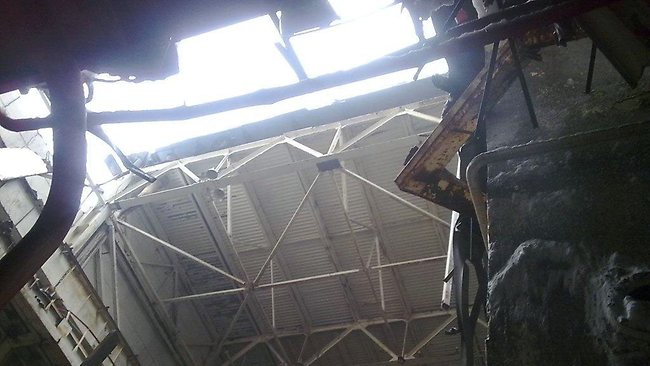Roof collapses at Chernobyl nuclear plant

A SECTION of the Chernobyl nuclear power plant in Ukraine collapsed under the weight of snow, officials said, raising new concerns about the condition of the facility that was the site of the world’s worst nuclear accident.
There were no injuries after Tuesday’s accident nor any increase in radiation from the reactor that exploded in 1986, Ukraine’s emergency agency said.
French construction firms Vinci and Bouygues said they had evacuated as a precaution about 80 employees working on a new protective shelter from the site.
“The preliminary reason for the collapse was too much snow on the roof,” the emergencies agency said, adding that radiation levels were “within the norm”.
The roof was built after the 1986 disaster but is not part of the sarcophagus structure covering the exploded reactor, it said.
However the collapse underlines concerns about the condition of the now defunct nuclear plant over two-and-a-half-decades after the explosion of reactor number four.
“Even if the radiation levels did not change, this is a worrying sign,” Vladimir Churov of Greenpeace in neighbouring Russia told the Interfax news agency.
“If there are sections in the turbine hall that are falling down there is no guarantee that the sarcophagus built in 1986 will not be the next to fall.”
The 80 Vinci and Bouygues workers employed to set up the new shelter over the exploded reactor as part of the Novarka consortium were all given radiation checks and evacuated, a Bouygues spokesperson said.
“Novarka is employing all measures to limit surface contamination. These are currently within admissable limits.”
However the spokeswoman for the Chernobyl plant, Maya Rudenko, dismissed Greenpeace’s concerns and said that the existing sarcophagus had been strengthened from 2004-2008 and could last until 2023.
“There is absolutely no risk,” she said.
The area of the accident is estimated at about 600sq m, the emergency agency said.
A statement on the website of the power station described the accident as the “partial failure of the wall slabs and light roof of the Unit 4 Turbine Hall.”
Chernobyl is only 100km from Ukraine’s capital Kiev and lies close to the borders with Russia and Belarus. The area around the plant is still very contaminated and is designated as a depopulated “exclusion zone”.
Amid concerns about the state of the sarcophagus, an arch-shaped structure called the New Safe Confinement is being built nearby to slide over the existing sarcophagus covering the reactor.
The European Bank for Reconstruction and Development is administering the fund to build the shelter with the help of donor contributions.
When it is finished in 2015, the structure will weigh 20,000 tonnes and span 257m.
Since the final of the four reactors at the plant was shut down in 2000, workers at the plant have been solely engaged in work to ensure safety.
Two workers were killed by the April 26, 1986 explosion and 28 other rescuers and staff died of radiation exposure in the next months. Tens of thousands of people needed to be evacuated and fears remain over the scale of damage to people’s health.
In 1986 and 1987, the Soviet government sent more than half a million rescue workers, known as liquidators, to clear up the power station and decontaminate the surrounding area.
However the total death toll from Chernobyl remains a subject of bitter scientific controversy, with estimates ranging from no more than a few dozen deaths directly attributable to the disaster to tens of thousands.
You can return to the main Market News page, or press the Back button on your browser.

